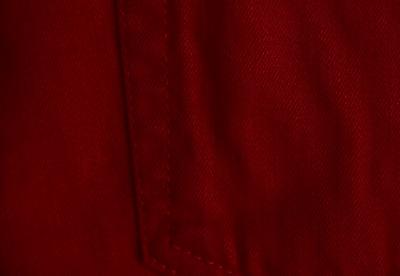
Some And Not Others: The Paintings of Rebecca Wolfram

♦
Some And Not Others,the latest exhibit by Chicago artist Rebecca Wolfram. The exhibition takes its name from one the paintings, and is intended to reflect the whole of the works being displayed. After viewing the paintings, the title makes sense due to its hidden complexity, its divisiveness, and the combination of these aspects. It implies many meanings and each painting inhabits an individual as well as collective meaning. They invite the viewer to dwell, to become absorbed in their colors, characters, figures, silhouettes, shapes, and intricacies. So let us explore their message that is both obscure, and apparent, as well as enjoy the visual worlds they create.
In the painting “Some And Not Others” a catlike creature is in a boxing match with a person, while an onlooker feline sits atop a podium where another person is resting, reading a book. In the center a rat feeds her litter. It will be up to each individual observer where his eyes will fall first. Here one cat is a privileged bystander while the other is about to fight. And one person sits, reads ignoring the violent surroundings, lost in the world of words; while the other is about to fight the cat. Caught in the middle, perhaps the one receiving the most pleasure is the rat.
In “Preparing,” opposing images of a stork that symbolizes life and a vulture, representing death, stand out. They are the only ones painted chiaroscuro and are in the foreground. After the viewer’s eyes are drawn by these two images, they slowly move to the other details, resting between them: Gravitating to a nest of humans (or humanoids depending on your view), and to the abundance of geometrical shapes within autumnal colors or of a setting sun.
In “Domestication” what first strikes the viewer is the hanging rabbit. This creature seems to be awaiting vivisection while falling into an endless world. And depending on the onlooker’s perspective, he’s on a bridge or stairs. Any imperiled, hanging animal is bound to catch the observer’s eye first. Then our vision gravitates to the rabbit standing in the foreground, sitting upon a delightful scarlet floor. Then there’s a nude person holding a small rabbit, showing it to an elderly one who is sitting in front of them. The fourth rabbit is on top of the painting with a child the same height as he is. This painting shows a certain animation from side to side and top to bottom.
And finally in “Abattoir” there is a person drinking from a bowl. This work of art follows the same patterns: A resurgence of certain types of color painted only on certain objects like the lizard on wheels, trying to capture a bigger circle. Encapsulating a certain mood, symmetry, characters, and palette, the rest of the painting, highlighted in Rebecca’s familiar shades, always comes as a pleasant surprise. Using these paintings, I have tried to summarize the talent of her work. One can dwell on the depths of the experience as a whole or through its parts (including the beings) that connect the totality of the event.
In these paintings she shows us a dreamlike nightmare that reflects the reality that surrounds us. People clearly abuse animals, kill them especially those considered vermin. They are vilified creatures, but they are only examples of animals that suffer in a people-centered world. She tries to bring or point out the inequality of existence on this planet. They are “The Others,” surrounding us, those we can ignore, learn to live with or kill. Our choices are reflected in the universe of her work and in the worlds within it.
♦
Leticia Cortez. Born in México and grew up in Chicago. She worked as a teacher at Truman College. She is a writer, educator and activist who currently lives and teaches in Santa Fe, Nuevo Mexico.
♦ ♦ ♦

